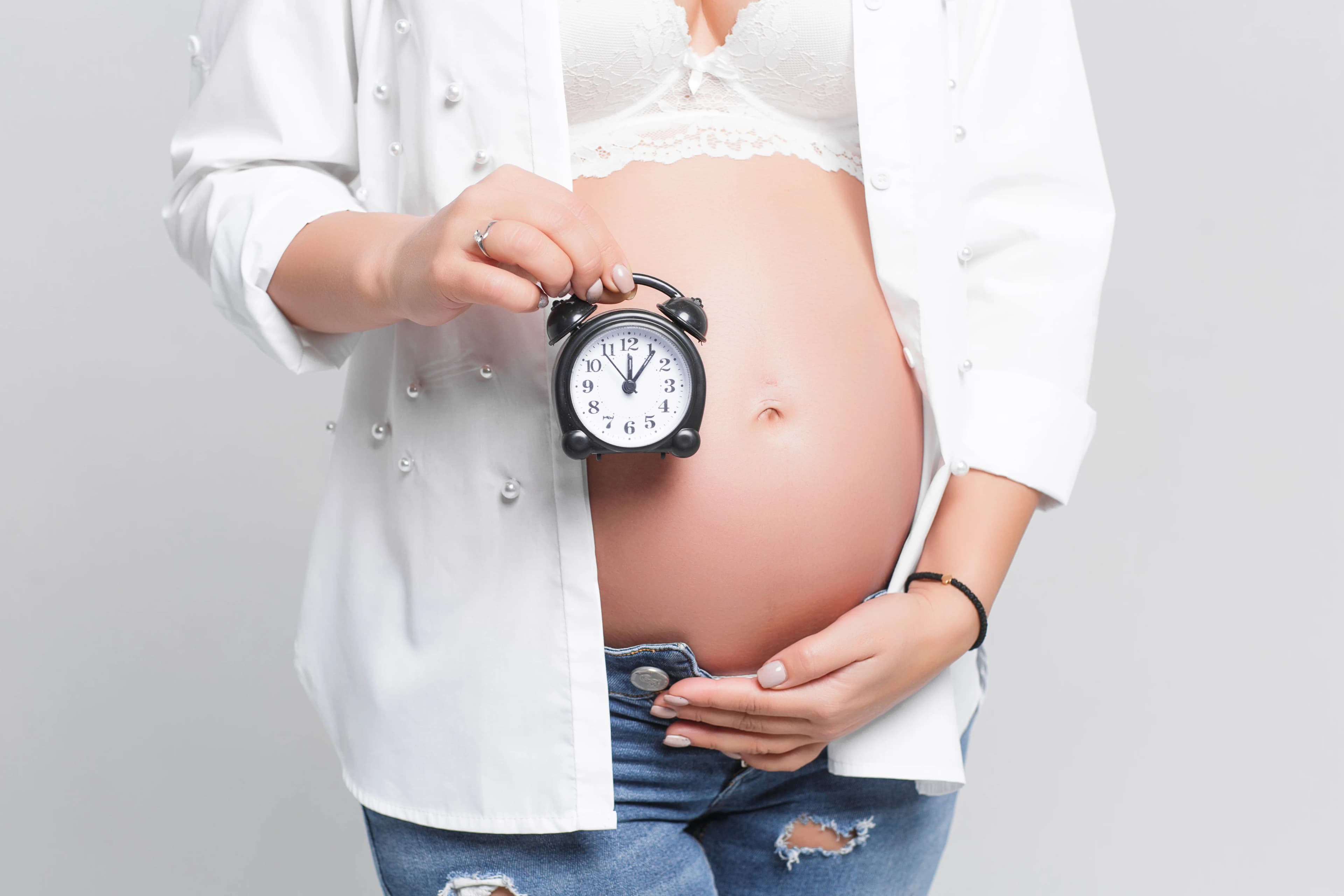Typically, if a woman tries to get pregnant through unprotected sex for 12 months without a result, they are diagnosed infertile. Nowadays, many treatment options are available by gynecologists, such as medications to correct hormonal issues, surgery for physical problems, and in vitro fertilization (IVF). If you have kidney failure and want to learn more about female infertility, join us in this article from the Doctour website.
What is female infertility?
Female infertility is a condition that affects a woman’s ability to conceive and carry a pregnancy to term. It’s a complex issue that can be caused by a variety of factors, both physical and hormonal.
The process of conception involves several steps: ovulation, where the ovary releases an egg; fertilization, where the egg is fertilized by a sperm in the fallopian tubes; and implantation, where the fertilized egg attaches itself to the lining of the uterus. Disruptions in any of these steps can lead to infertility.
One common cause of female infertility is ovulatory disorders, which affect the release of eggs from the ovaries. These can be caused by conditions such as polycystic ovary syndrome (PCOS), which is characterized by high levels of androgens and insulin, and primary ovarian insufficiency (POI), where the ovaries stop functioning normally before the age of 40.
Treatment for female infertility can range from lifestyle changes and fertility drugs to assistive reproductive technologies like in vitro fertilization (IVF). The choice of treatment depends on the cause of infertility, the woman’s age, how long the couple has been trying to conceive, and personal preferences. It’s always best to consult with a healthcare provider to understand the options and decide on the best course of treatment.
How common is female infertility?
Female Infertility is a common disease. At least 10% of women deal with infertility of some kind. The chances of being infertile increase as a woman ages.
What causes female infertility?
There are many possible causes of infertility. Some possible causes of female infertility can include:
Problems with the uterus
Including polyps, fibroids, septum, or adhesions inside the cavity of the uterus. Polyps and fibroids usually form on their own at any time, whereas other abnormalities (like a septum) are present at birth.
Problems with the fallopian tubes
The most common cause of “tubal factor” infertility is a pelvic inflammatory disease, usually caused by chlamydia and gonorrhea.
Problems with ovulation
There are many reasons why you may not ovulate (release an egg) regularly, such as Hormonal imbalances, eating disorders in the past, substance abuse, thyroid conditions, severe stress, and pituitary tumors are all examples of things that can affect ovulation.
Problems with egg number and quality
Because women are born with all the eggs, they will ever have, and because of many factors, this supply can “run out” early before menopause. Also, some eggs will have an incorrect number of chromosomes and cannot fertilize or grow into a healthy fetus.

What are the types of female infertility?
Primary infertility: Refers to couples who have not been able to conceive after at least one year of trying without the use of birth control. This type of infertility could be due to issues in either or both partners. In the context of female primary infertility, it could be due to a variety of factors such as ovulatory disorders, tubal blockage, uterine abnormalities, or unexplained causes.
Ovulatory disorders: Affect the release of eggs from the ovaries, and are one of the most common causes of female infertility. Conditions such as Polycystic Ovary Syndrome (PCOS), hypothalamic dysfunction, and premature ovarian insufficiency can lead to ovulatory disorders.
Tubal infertility: Caused by damage to the fallopian tubes, can prevent sperm from reaching the egg or block the passage of the fertilized egg into the uterus. Causes of tubal infertility include pelvic inflammatory disease, previous surgery in the abdomen or pelvis, and ectopic pregnancy.
Uterine or cervical abnormalities: Includes problems with the opening of the cervix or cervical mucus, or abnormalities in the shape or cavity of the uterus, which can also cause infertility. Uterine abnormalities can be present from birth, or they can occur later in life due to polyps or fibroids that grow in the uterus.
Unexplained infertility: A term that doctors use when they can’t find a cause for infertility after a full evaluation of both partners. Even when the cause is unexplained, treatment options are still available.
Secondary infertility: Refers to couples who have been able to get pregnant at least once, but now are unable. It’s often surprising to these couples and can be quite frustrating. The causes of secondary infertility are often the same as those of primary infertility.
It’s important to note that infertility can be a complex condition with multiple types and causes. It’s also a very personal and sensitive issue. If you’re experiencing difficulties getting pregnant, it’s important to seek help from a healthcare provider who specializes in reproductive health. They can provide a thorough evaluation and discuss the best treatment options for your specific situation.
What are the risk factors for infertility?
Female infertility can be influenced by a variety of risk factors. These are aspects of a woman’s lifestyle or medical history that can affect her ability to conceive or carry a pregnancy to term.
Age: One of the most significant risk factors for female infertility. A woman’s fertility naturally declines as she gets older, particularly after the age of 35. This is due to a decrease in the quantity and quality of her eggs.
Lifestyle factors: For instance, smoking can damage the cervix and fallopian tubes, and it can also accelerate the age-related decline in a woman’s egg supply. Excessive alcohol consumption can lead to ovulation disorders. Similarly, use of illicit drugs, such as cocaine or marijuana, can interfere with the functioning of the reproductive system.
Weight: Both underweight and overweight women may have irregular menstrual cycles, which can affect ovulation. Moreover, obesity can also lead to insulin resistance and polycystic ovary syndrome (PCOS), both of which can affect fertility.
Medical conditions: They can also increase the risk of female infertility. These include endometriosis, where tissue from the lining of the uterus grows outside the uterus; pelvic inflammatory disease, an infection of the female reproductive organs; and uterine fibroids, noncancerous growths in the uterus.
Sexually transmitted infections (STIs): Such as chlamydia and gonorrhea can damage the fallopian tubes, leading to infertility. Therefore, safe sexual practices are crucial for preserving fertility.
Environmental factors: For example, radiation treatment and chemotherapy for cancer can impair egg production. Even exposure to certain pesticides and other chemicals can affect fertility.
Genetic disorders: Such as Turner syndrome or Klinefelter’s syndrome, can result in premature ovarian failure and subsequent infertility.
It’s important to note that having one or more of these risk factors does not guarantee that a woman will experience infertility. However, being aware of these factors can help women make informed decisions about their reproductive health.
What are the factors resulting in female infertility?
Many factors such as general health conditions, genetic traits, lifestyle choices, and age can all increase a woman’s risk of infertility. Specific factors can include:
Age
Hormone issue that prevents ovulation
Abnormal menstrual cycle
Obesity
Being underweight
Having a low body-fat content from extreme exercise
Endometriosis
Structural problems (problems with the fallopian tubes, uterus, or ovaries)
Uterine fibroids
Cysts
Tumors
Autoimmune disorders (lupus, rheumatoid arthritis, Hashimoto’s disease, thyroid gland conditions)
Sexually transmitted infections (STIs)
Polycystic Ovary Syndrome (PCOS)
Primary Ovary Insufficiency (POI)
Excessive substance use (heavy drinking)
Smoking
How does age impact female infertility?
As a woman ages, her chances of becoming pregnant decrease. Age is becoming a more common factor in female infertility because many couples are waiting to have children until their 30s or 40s. Women over age 35 have a higher risk of having fertility issues. The reasons for this include:
The overall number of eggs is lower
More eggs have an abnormal number of chromosomes
An increased risk of other health conditions

How is female infertility treated?
Medications: Fertility drugs change hormone levels to stimulate ovulation.
Surgery: Surgery can open blocked fallopian tubes and remove uterine fibroids and polyps. Surgical treatment of endometriosis doubles a woman’s chances of pregnancy. Adoption and gestational surrogacy may also be options for women with infertility who wish to start a family.
Conclusion
Female infertility is a complex and multifaceted issue that affects many women and couples worldwide. It can be caused by a variety of factors, including age, lifestyle choices, medical conditions, and genetic disorders. Despite the challenges it presents, it’s important to remember that infertility is not a verdict. With the advancements in medical technology and treatments, many women can overcome their fertility issues and successfully conceive.
Early diagnosis and treatment are key, so it’s crucial for women experiencing difficulties in getting pregnant to seek help from healthcare professionals specializing in reproductive health. Remember, you’re not alone in this journey, and there are numerous resources and support systems available to help you navigate through this challenging time. Infertility can be a difficult road, but with patience, resilience, and the right care, the dream of parenthood can become a reality.
Read More: